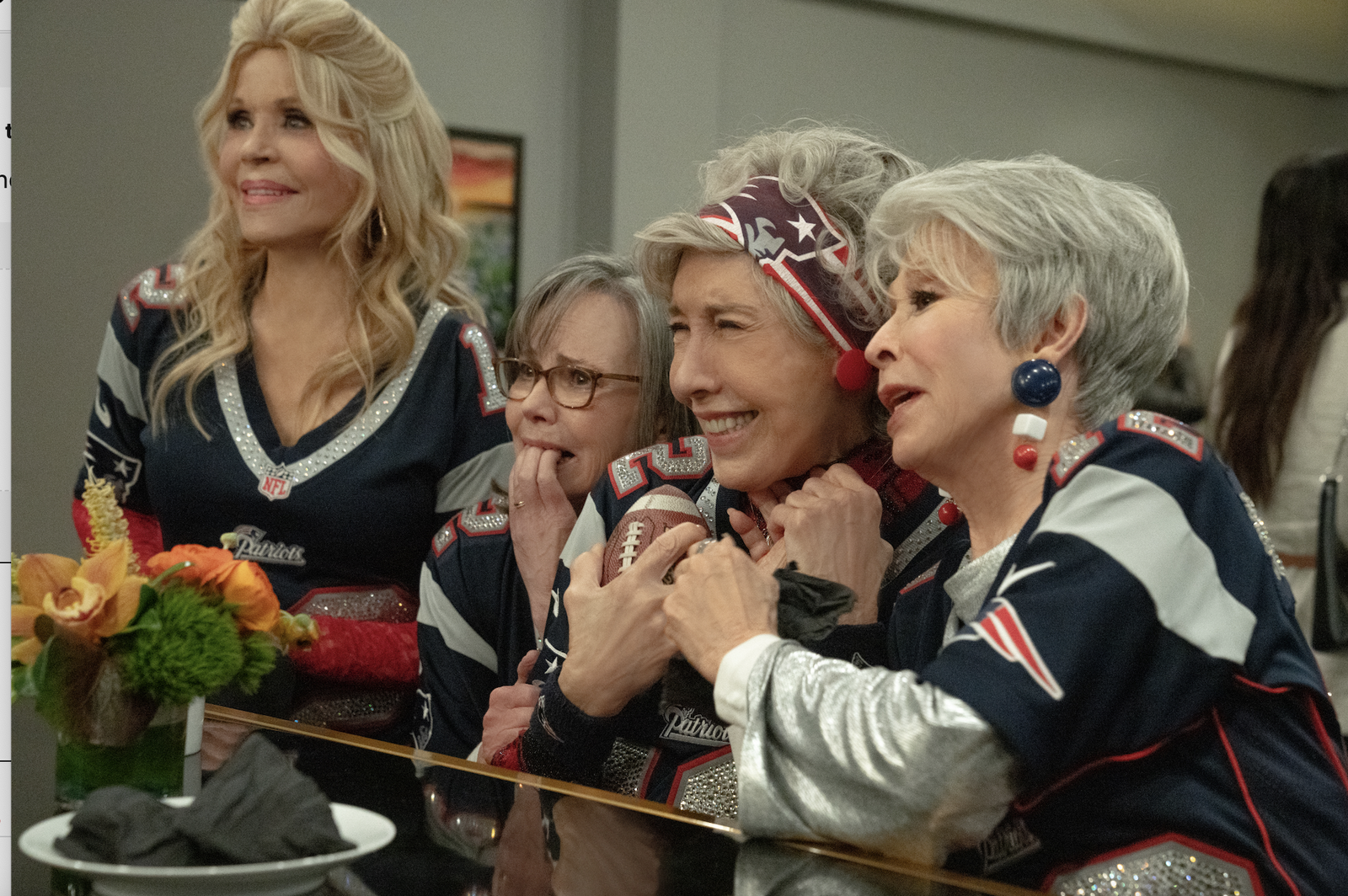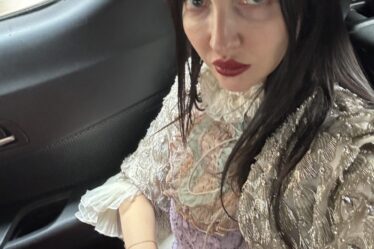
One year ago, as Jane Fonda was taking a break in between shots for her latest Glamour cover, I joined her for lunch, where we talked about everything from the sequel to Book Club (coming this May) to her favorite vacation spots. She also mentioned that later in the week she’d be returning to the set of 80 for Brady, her new movie (out this Friday, February 3) co-starring fellow legends Lily Tomlin, Rita Moreno, Sally Field, and Super Bowl legend Tom Brady.
I thought she was kidding.
She wasn’t. This was an actual movie, she said, produced by Brady, about a group of real-life friends who just happen to all have their AARP card and take a wild trip to the Super Bowl to see their favorite player. I was sold. Honestly, I would have watched those four women go grocery shopping for all I cared.
While we know there’s an audience for movies (Book Club) and series (The Golden Girls, Grace & Frankie) featuring women over 60, Hollywood is often slower to catch up. And when they do, they run the risk of making caricatures of said women, focusing on easy jokes and outdated tropes.
It’s impossible to entirely get away from, but in 80 for Brady, co-writers Sarah Haskins and Emily Halpern made a concentrated effort to write these women—ranging in age from 75 to 90—exactly as they are: full of life, whip smart, and also not immune to this thing called aging.
“We made a concerted effort to stay away from mean-spirited old person jokes, like adult diapers, fiber pills, walkers,” Haskins and Halpern tell Glamour. “We didn’t want to condescend to our characters. We wanted the audience to be laughing with these ladies and not at them. The tone of the film needed to reflect the tone of the friendship between our characters; really funny with a lot of heart.”
That doesn’t mean the movie is without its moments where you have to completely suspend belief, but overall it’s the kind of film that celebrates life and friendship exactly as it should be seen on screen. “Our goal was always to write these characters as fully three-dimensional people who happen to be 80,” Haskins and Halpern say. “Their age is a major part of their story but it is not the most important part of who they are.”


